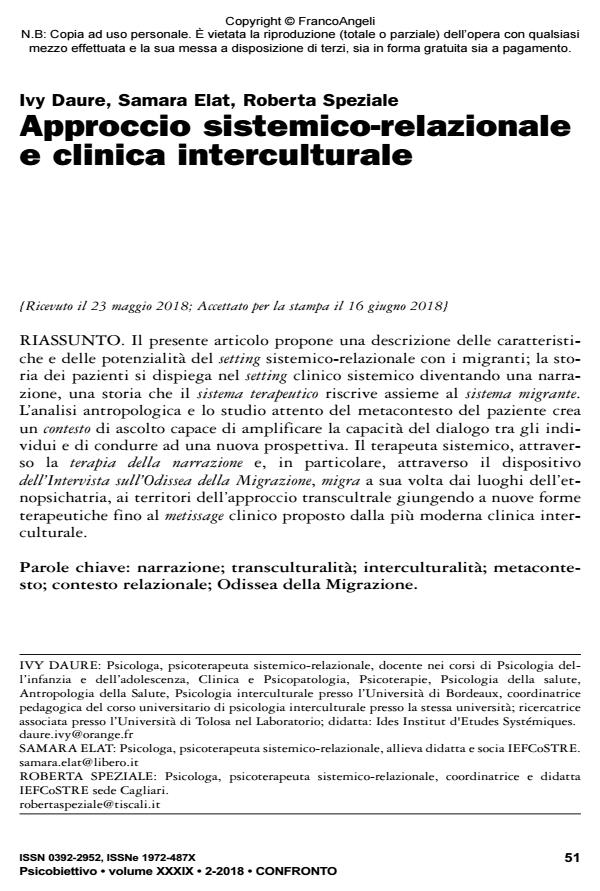Systemic-relational approach and intercultural clinic
Journal title PSICOBIETTIVO
Author/s Ivy Daure, Samara Elat, Roberta Speziale
Publishing Year 2018 Issue 2018/2
Language Italian Pages 18 P. 51-68 File size 129 KB
DOI 10.3280/PSOB2018-002004
DOI is like a bar code for intellectual property: to have more infomation
click here
Below, you can see the article first page
If you want to buy this article in PDF format, you can do it, following the instructions to buy download credits

FrancoAngeli is member of Publishers International Linking Association, Inc (PILA), a not-for-profit association which run the CrossRef service enabling links to and from online scholarly content.
This article offers a description of the characteristics and possibilities of applying the systemic relational approach to the setting with migrants; the history of the patients unfolds in the clinical systemic setting becoming a narration, a story that the therapeutic system rewrites together with the migrant system. The anthropological analysis and the careful study of the patient’s metacontext creates a listening environ- ment that amplifies the capacity for dialogue between individuals and leads to a new perspective. The systemic therapist, throughout the narration therapy and, especially, throughout the device of the Interview on the Migration Odyssey, migrates himself from the places of ethnopsychiatry, to the territories of the transcultural approach, rea- ching new therapeutic forms up to the clinical métissage proposed by the most modern intercultural clinician.
Keywords: Narration; Transcultural; Intercultural; Metacontestus; Rela- tional Context; Migration Odyssey.
Ivy Daure, Samara Elat, Roberta Speziale, Approccio sistemico-relazionale e clinica interculturale in "PSICOBIETTIVO" 2/2018, pp 51-68, DOI: 10.3280/PSOB2018-002004